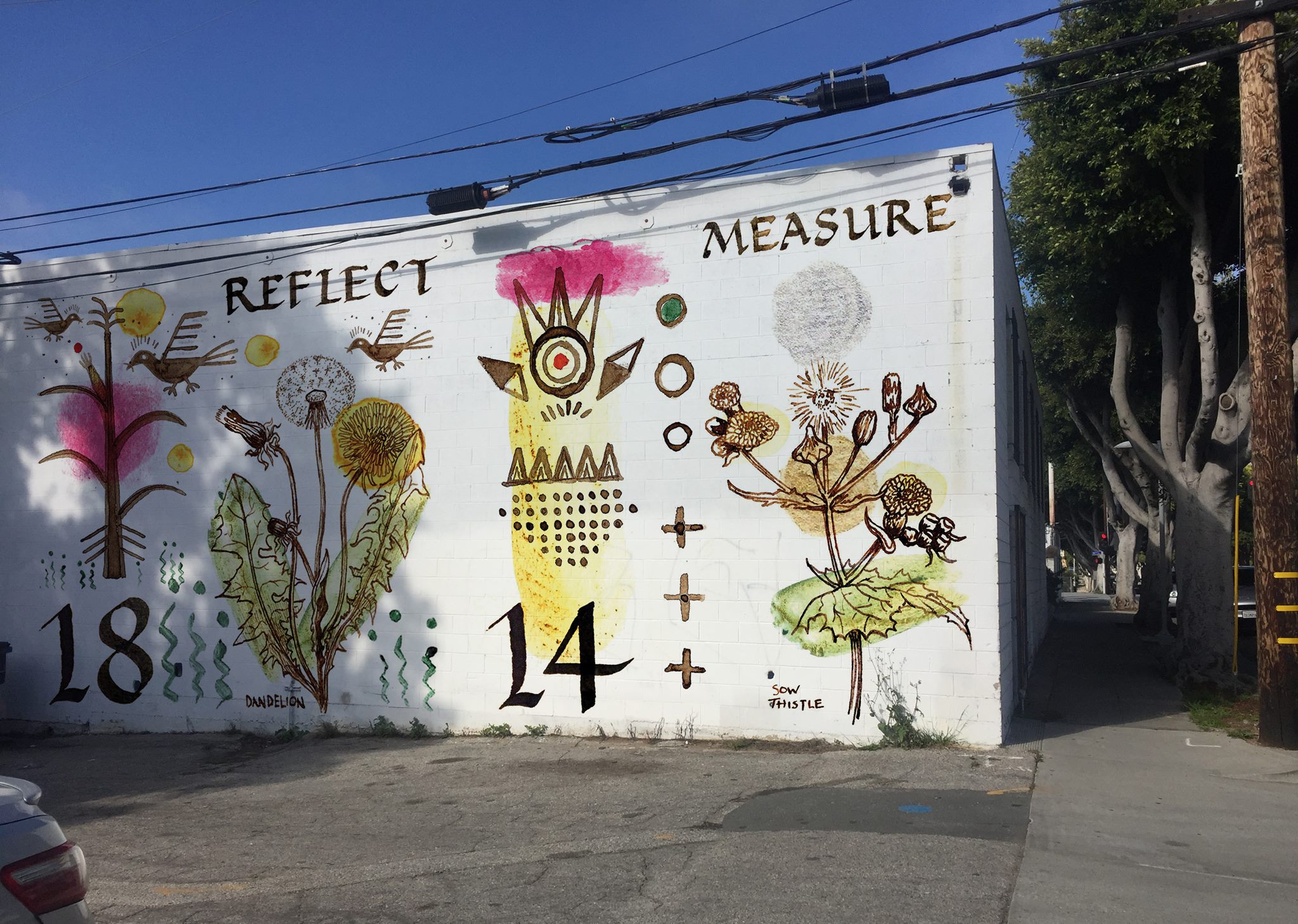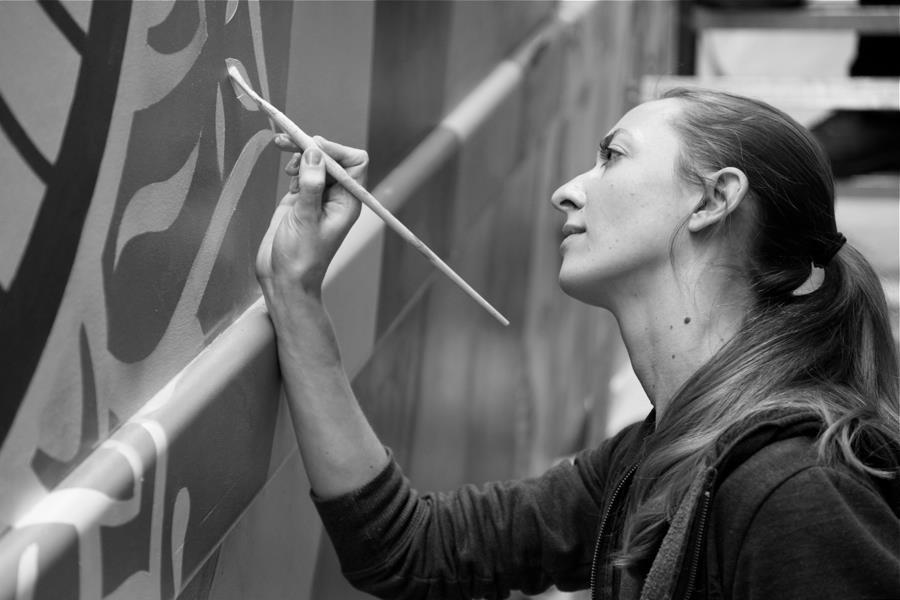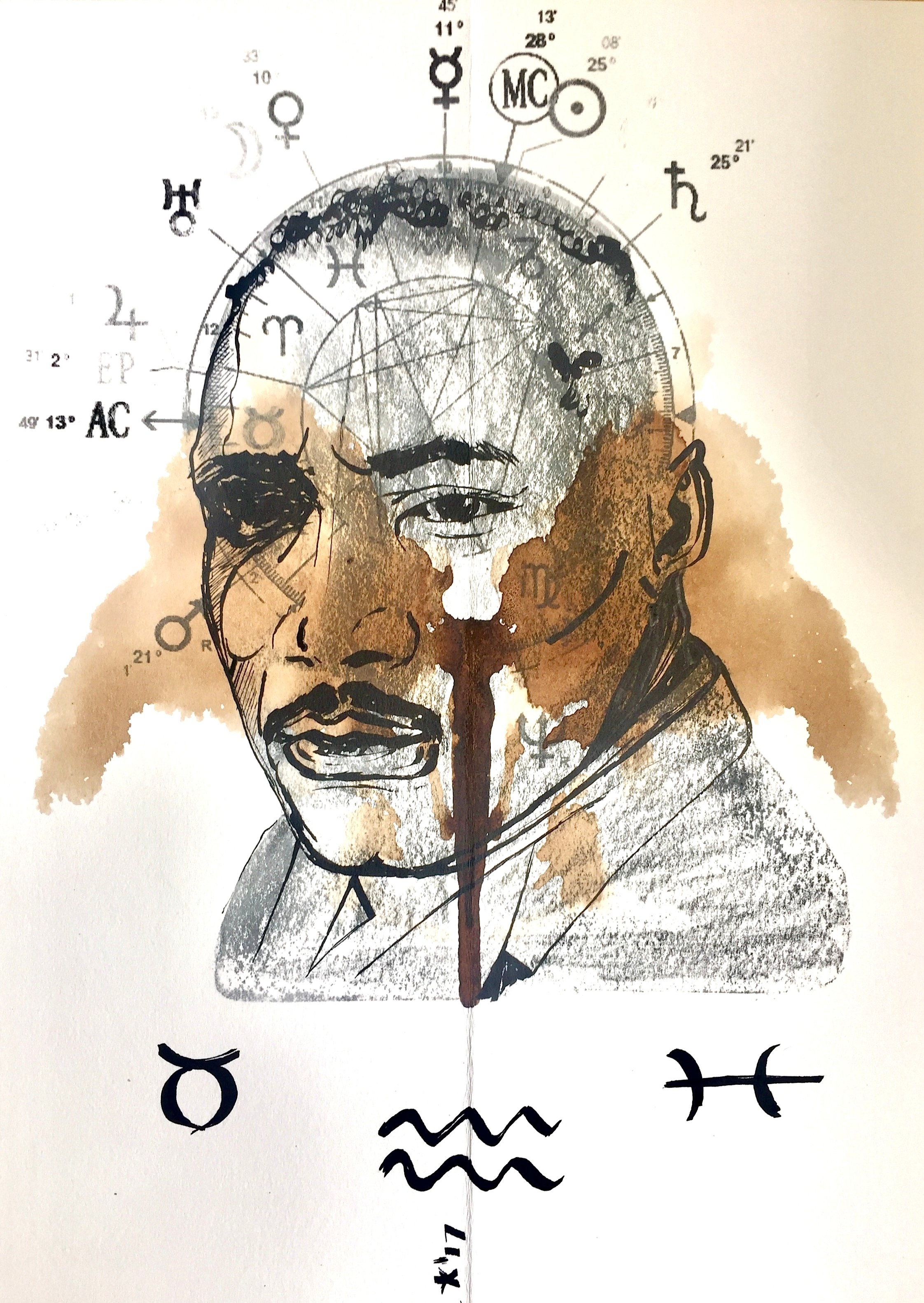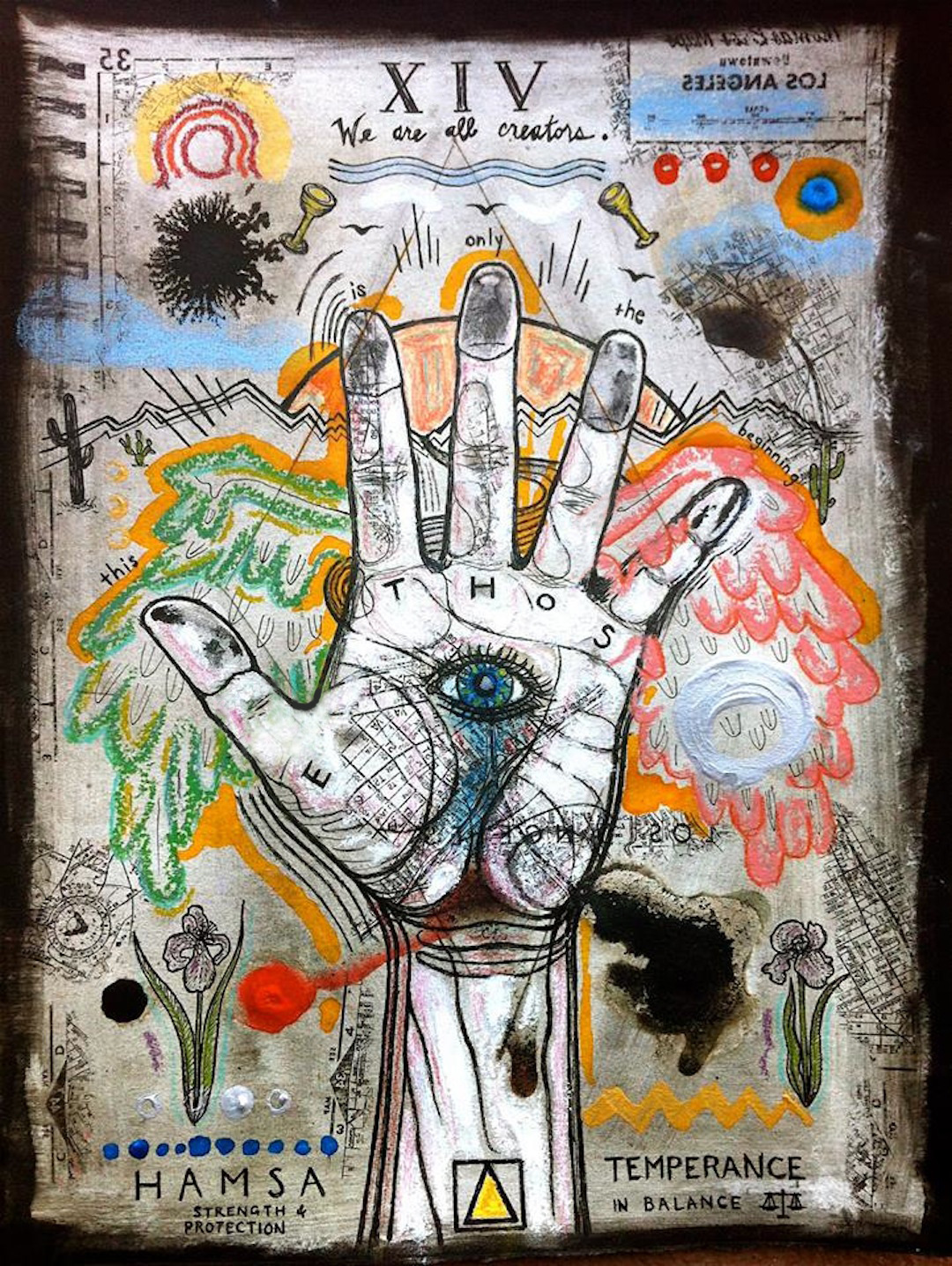Obey Clothing designer, poster artist for John Legend’s urban gardening documentary
Can You Dig This, and creator of the food foraging multimedia book and project Sidewalk Superfoods, Lauren Over exemplifies the conscientious approach to art as an act of love for a subject, and for the viewer who can learn something wonderful. The fourth in my series of interviews about artists using social networking to find their audience, Lauren demonstrates how local activism, art and social media can flourish together.

Tamra Lucid: What inspired you to make these delicate illustrations of plants most people ignore?

I’ve been using coffee and a walnut-based ink from an art supply store for some time. The rest of these pigments come from the food co-op: beets, spirulina, turmeric and cayenne, wine- just mixed with a little water as needed! I think it’d be really fun to keep playing with other foods, found berries and plants for coloring.
How has social networking been involved in your creation of Sidewalk Superfoods?
To help get the word out, you’ll be mailing copies to your favorite book stores?
I’m very excited to start sending out copies of the book, but I haven’t yet. They’re available through Amazon- but for the packets I’ll mail to stores, I’m currently hand-making versions of the book. My boyfriend works at/ attends Otis College of Art and Design, and has access to a bookbinder. So we’ve been trying out that and other DIY printing/binding methods (I’ll have them in Otis’ graphic design book fair this July). Plus, I’d like to send the books as part of a packet that also contains cards and stickers. I hope to begin sending them out in 1-2 weeks.
How do tarot, astrology, kabbalah and numerology influence your work?
I’m only superficially knowledgeable about Kabbala– but I began studying Astrology, Numerology and Tarot about 7 years ago. It’s hard to study one without being led into all three- there’s much interconnection and overlap. I think they began to manifest themselves in my visual art right away. There’s such rich history and symbolism behind and within them. They appeal to me because of the way they correspond to psychology, personality type and relationship/communication dynamics. I think using their imagery in my art isn’t an expression of my understanding, as much as it’s a way for me to analyze and expand my current perception of their meanings, as they relate to my personal experience.
What is your favorite alternative photographic process and why?
Jill Enfield describes it well:”Lumen prints are made by taking sheets of unexposed black-and-white photo paper and placing objects or negatives on top as if you were going to make a photogram, but instead of using an enlarger you take the paper out into the sun. The results will vary due to exposure times, density of photogram or negative, quality of light and, most importantly, the type of paper. Each paper will have a different color, depending on whether it was old or new, fiber or resin, and the manufacturer. According to an article by Jerry Burchfield (on www.freestylebiz.com)) exposures can vary from half an hour to days and sometimes even months.”
Tell us about the art workshops you help provide at the Children’s Hospital?
I haven’t been able to volunteer as much with Art of Elysium (www.theartofelysium.org) since I’ve been working full-time, but I hope to more again in the future. I’m very interested in the work this organization does, as it’s sort of a hybrid of art education and art therapy. They recruit artist-volunteers in the areas of music, visual arts, theater and fashion, and go into primarily hospital settings to either perform for or do projects with the youth there. Most recently, I’ve worked with an evening emotional support group for teens in conjunction with the Children’s Hospital. In the past, I’ve had the chance to work with kids staying at the USC Children’s Hospital, and even to help work on a mural with Shepard Fairey that he designed for the Children’s wing at that site. We hope it takes their minds off the pain and/or worries of their current situations, and helps them to realize they can be transported through their imaginations to much freer, more enjoyable and empowered-feeling places. It also shows them that even from within a hospital, important, meaningful and impactful self-expression and creation can occur.
While I was in grad school I applied to an internship at an anonymous graphic design studio in Echo Park that had posted an ad on Craigslist. I got offered the opportunity, and it turned out to be Shepard Fairey’s Studio Number One! When I started, the steady client the studio produced for was Obey Clothing. It was a great fit for me, because they used a lot of hand-made illustration work in their design, which was more my background than computer graphics. I also felt aligned with the aesthetic and values of the brand. I stayed for about a year, and then continued to freelance for the clothing line. It’s really what got me thinking about the idea of wearable art- putting messages on a medium that can be seen by anyone and everyone you encounter. It’s another way to take art out of the gallery and into the street, like murals and public art- to make it democratically accessible.
What do you think of the plan to green the Los Angeles River?
I wasn’t familiar with the plan, so I searched online to learn more about it. I found an article by Jon Christensen from 2/20/18 called ‘Can the L.A. River Avoid ‘Green Gentrification?’ It seems to sum up the scale and complexity of the situation well, but more importantly provides a hopeful perspective on it. It highlights a recently-formed group called LA ROSAH (Los Angeles Regional Open Space and Affordable Housing Collaborative,
I’m excited to to learn about this group and it’s efforts. I’ll be interested in following their actions, and possibly getting involved. Thank you for bringing it more into my awareness!














